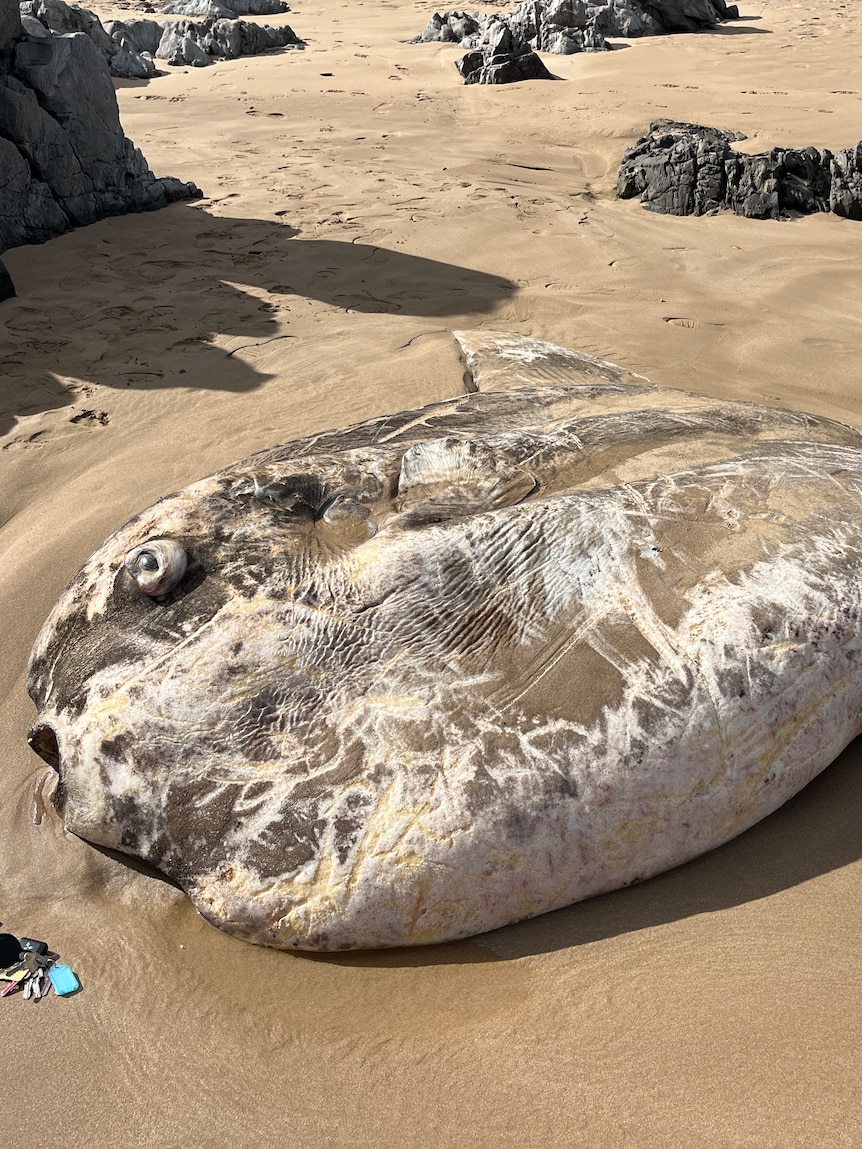A huge creature of the deep identified as a giant sunfish has been found washed up on a South Australian beach, where it is causing both a stink and a stir.
The large fish carcass was discovered at Petrel Cove at the base of The Bluff near Victor Harbor along South Australia’s south coast.
The SA Museum said while there were various types of sunfish, the one in question was “almost certainly a bump-head sunfish, Mola alexandrini“, also sometimes known as the giant sunfish.
“You can tell it’s a bump-head sunfish rather than one of the other two types (Mola tecta, the Hoodwinker sunfish and Mola mola, the Ocean sunfish) because of the prominent chin you can see in the photo,” a spokesperson for the museum said.
“The other two species don’t have that.
“Sunfish are found worldwide and of the three species of sunfish the bump-head sunfish is the one most often encountered in South Australia.”
‘Small dining table kind of size’
The fish is attracting quite a lot of attention among locals, with a stream of passers-by going down the nearby steps to the beach to have a look at the striking specimen.
The carcass, which is partially embedded in the sand, is also causing quite a strong smell.
ABC reporter Caroline Horn, who has seen the animal up close, told the SA Regional Drive program that environmental authorities estimated it to be between two and three metres in both length and height.
“Wildlife [authorities] were here earlier and apparently they measured it at 2.7-metres wide and from the top of the fin to the bottom of the fin the other way is 2.2 metres,” she said.
“It’s just enormous. It’s like, as someone said, a small dining table kind of size.
“It looks pretty unusual, and there’s a steady stream of people coming down from Victor to have a look.”
It is not the first time a sunfish has been found washed ashore along the SA coast in recent years.
In 2019, one believed to belong to the Mola mola species was found near the mouth of the River Murray.
At the time, SA Museum fish collection manager Ralph Foster explained that, while sunfish were known to swim to the depths of the ocean, they had got their name from their trait of basking in the sun.
“In recent work people have been putting satellite tags and data loggers on them and found they will come to the surface and lay on their side on the surface, hence the name the sunfish,” Mr Foster said in 2019.
“Once they are warm enough they will dive down several hundreds of metres and feed on jellyfish and things right at the depth and stay down there for quite a long time.”




